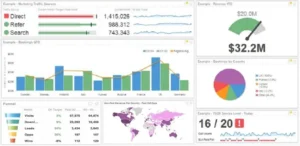Data privacy regulations are becoming increasingly complex. How do we identify and remove sensitive Information to comply with regulations?
There are several steps that organizations can take to identify and remove sensitive Information to comply with data privacy regulations:
- Conduct a data inventory: You should identify where your organization stores and processes sensitive Information.
- Assess the data: Evaluate it to determine if it is regulated and necessary for your organization’s operations.
- Implement data minimization: Limit the collection and retention of sensitive Information to only what is necessary for your organization’s operations.
- Implement data masking: Use techniques like data masking, tokenization, and redaction to protect sensitive Information.
- Monitor and audit: Regularly monitor and audit data access and use it to detect and prevent unauthorized access to sensitive Information.
- Train employees: Train employees on data privacy regulations and protecting sensitive Information.
- Use technology: Use software tools to automatically identify and remove sensitive Information from data sets and monitor and audit access to sensitive Information.
It’s important to note that specific regulations such as GDPR, HIPAA, and CCPA may have particular requirements that organizations must comply with. Therefore, they should consult with legal and compliance experts to ensure compliance with all applicable regulations.
Here Are Some Examples of Regulated Data
Regulated data refers to Information subject to specific laws and regulations governing how it can be collected, stored, used, and shared. Some examples of controlled data include:
- Personal Identifiable Information (PII): This includes Information such as name, address, Social Security number, and other information used to identify an individual. PII is regulated by the General Data Protection Regulation (GDPR), the California Consumer Privacy Act (CCPA), and other more granular laws.
- Protected Health Information (PHI): This includes information such as medical records, treatment history, and other Information related to an individual’s health. PHI is regulated by laws such as the Health Insurance Portability and Accountability Act (HIPAA)
- Financial Information includes bank account numbers, credit card numbers, and other Information. Financial Information is regulated by laws such as the Gramm-Leach-Bliley Act (GLBA)
- Children’s Information: This includes Information such as name, address, and date of birth of children under the age of 13. Children’s Information is regulated by laws such as the Children’s Online Privacy Protection Act (COPPA)
- Biometric Information: This includes fingerprints, facial recognition, and other biometric data. Biometric Information is regulated by laws such as the Biometric Information Privacy Act (BIPA)
- Sensitive Personal Data: This includes race, religion, political opinions, sexual orientation, trade union membership, etc. Sensitive personal data is regulated by laws such as GDPR and other data protection laws.
These are just a few examples, and the specific types of regulated data can vary depending on the country and industry. Therefore, organizations must consult with legal and compliance experts to understand the types of controlled data they handle and ensure compliance with all applicable regulations.







